Tree of Life |
||||||||||||||||||||||||||||
 |
 |
|||||||||||||||||||||||||||
Knitted jacket in DROPS Flora and DROPS Kid-Silk. The piece is worked with lace pattern and bobbles. Sizes S - XXXL.
DROPS 231-3 |
||||||||||||||||||||||||||||
|
------------------------------------------------------- EXPLANATIONS FOR THE PATTERN: ------------------------------------------------------- RIDGE/GARTER STITCH (worked back and forth): Knit all rows. 1 ridge = knit 2 rows. PATTERN: See diagram A.1. Choose the diagram for your size. The diagram shows all rows in the pattern from the right side. INCREASE TIP (sleeves): All increases are worked from the right side! Increase by making 1 yarn over inside 2 stitches on each side (2 stitches increased). On the next row purl the yarn overs twisted, then work the new stitches in stockinette stitch. BUTTONHOLES: Work buttonholes on the right band. 1 BUTTONHOLE = Knit together the 3rd and 4th stitches from the edge and make 1 yarn over. On the next row knit the yarn over to leave a hole. The last buttonhole is worked on the next-to-last row before stitches are placed on a thread for the neck. Work the buttonholes when the piece measures: S: 4, 14, 24, 33 and 42 cm = 1 1/2", 5 1/2", 9 1/2", 13" and 16 1/2" M: 5, 15, 25, 35 and 44 cm = 2", 6", 9 3/4", 13 3/4" and 17 1/4" L: 4, 12, 20, 28, 36 and 44 cm = 1 1/2", 4 3/4", 8", 11", 14 1/4" and 17 1/4" XL: 4, 13, 22, 30, 38 and 46 cm = 1 1/2", 5 1/8", 8 3/4", 11 3/4", 15" and 18" XXL: 4, 13, 22, 30, 38 and 46 cm = 1 1/2", 5 1/8", 8 3/4", 11 3/4", 15" and 18" XXXL: 5, 14, 23, 32, 40 and 48 cm = 2", 5 1/2", 9", 12 1/2", 15 3/4" and 19" ------------------------------------------------------- START THE PIECE HERE: ------------------------------------------------------- JACKET – SHORT OVERVIEW OF THE PIECE: The piece is worked in sections, bottom up and back and forth, then sewn together. BACK PIECE: Cast on 88-96-108-120-128-140 stitches with circular needle size 4 MM = US 6 and 1 strand of each quality. Purl 1 row from the wrong side, then work rib as follows: 1 edge stitch in GARTER STITCH – read description above, * purl 2, knit 2 *, work from *-* until there are 3 stitches left, purl 2 and 1 edge stitch in garter stitch. When the rib measures 4 cm = 1 1/2", change to circular needle size 5 MM = US 8. Knit 1 row from the right side where you decrease 11-11-17-17-19-19 stitches evenly spaced = 77-85-91-103-109-121 stitches. Continue with stockinette stitch and 1 edge stitch in garter stitch on each side. REMEMBER THE KNITTING GAUGE! When the piece measures 33-34-35-36-37-38 cm = 13"-13 3/8"-13 3/4"-14 1/4"-14 1/2"-15", bind off for the armholes at the beginning of each row as follows: 3-3-3-5-5-7 stitches 1 time, 2 stitches 0-0-0-1-2-3 times and 1 stitch 1-1-2-2-2-2 times on each side = 69-77-81-85-87-91 stitches. When the piece measures 46-48-50-52-54-56 cm = 18"-19"-19 3/4"-20 1/2"-21 1/4"-22", bind off the middle 25-25-27-27-29-29 stitches for the neck and finish each shoulder separately (22-26-27-29-29-31 stitches on each shoulder). Continue with stockinette stitch and 1 edge stitch in garter stitch on each side. AT THE SAME TIME bind off on each row from the neck as follows: 1 stitch 2 times = 20-24-25-27-27-29 stitches. Continue working until the piece measures 50-52-54-56-58-60 cm = 19 3/4"-20 1/2"-21 1/4"-22"-22 3/4"-23 5/8". Bind off. Work the other shoulder in the same way. RIGHT FRONT PIECE: Cast on 52-56-60-64-68-76 stitches with circular needle size 4 MM = US 6 and 1 strand of each quality. The first row is worked as follows from the wrong side: 1 edge stitch in garter stitch, purl until there are 5 stitches left and 5 band stitches in garter stitch. Then work next row from the right side as follows: 5 band stitches in garter stitch, * knit 2, purl 2*, work from *-* until there are 3 stitches left, knit 2 and 1 edge stitch in garter stitch. Continue like this. When the rib measures 4 cm = 2", change to circular needle size 5 MM = US 8. Remember the BUTTONHOLES on the right band – see description above! Then work next row from the right side as follows: 5 band stitches in garter stitch, * knit 2, purl 2*, work from *-* until there are 3 stitches left, knit 2 and 1 edge stitch in garter stitch. Continue this pattern for 4 cm = 1 1/2". Change to circular needle size 5 MM = US 8 and work as follows from the right side: 5 band stitches in garter stitch, purl 1, work A.1 AT THE SAME TIME as you decrease 0-0-2-2-0-0 stitches evenly spaced, stockinette stitch until there is 1 stitch left and decrease 8-8-7-5-8-10 stitches evenly over these stitches, 1 edge stitch in garter stitch = 44-48-51-57-60-66 stitches. Work the next row from the wrong side as follows: 1 edge stitch in garter stitch, 9-13-14-20-21-27 stitches in stockinette stitch (purl from the wrong side), A.1, knit 1 and 5 front band stitches in garter stitch. REMEMBER THE KNITTING GAUGE! When the piece measures 33-34-35-36-37-38 cm = 13"-13 3/8"-13 3/4"-14 1/4"-14 1/2"-15", bind off for the armhole at the beginning of each row from the wrong side as follows: 3-3-3-5-5-7 stitches 1 time, 2 stitches 0-0-0-1-2-3 times and 1 stitch 1-1-2-2-2-2 times = 40-44-46-48-49-51 stitches. When the piece measures 42-44-44-46-46-48 cm = 16 1/2"-17 1/4"-17 1/4"-18"-18"-19", work the first 14 stitches from the right side and place them on a thread for the neck (i.e. 5 band stitches, purl 1 and 8 stitches from A.1) = 26-30-32-34-35-37 stitches on the shoulder. Continue working as before. AT THE SAME TIME bind off for the neck at the beginning of each row from the right side as follows: 2 stitches 2 times and 1 stitch 2-2-3-3-4-4 times = 20-24-25-27-27-29 stitches. Continue the pattern until the piece measures 50-52-54-56-58-60 cm = 19 3/4"-20 1/2"-21 1/4"-22"-22 3/4"-23 5/8". Bind off. LEFT FRONT PIECE: Cast on 52-56-60-64-68-76 stitches with circular needle size 4 MM = US 6 and 1 strand of each quality. The first row from the wrong side is worked as follows: 5 band stitches in garter stitch, purl until there is 1 stitch left and 1 edge stitch in garter stitch. Work the next row from the right side as follows: 1 edge stitch in garter stitch, * knit 2, purl 2 *, work from *-* until there are 7 stitches left, knit 2 and 5 band stitches in garter stitch. Continue this rib for 4 cm = 1 1/2". Change to circular needle size 5 MM = US 8 and work as follows from the right side: 1 edge stitch in garter stitch, stockinette stitch over the next 17-21-21-25-29-37 stitches and decrease 8-8-7-5-8-10 stitches evenly over these stitches, work A.1 and decrease 0-0-2-2-0-0 stitches evenly over A.1, purl 1 and 5 band stitches in garter stitch = 44-48-51-57-60-66 stitches. Work next rom from the wrong side as follows: 5 front band stitches. in garter stitch, knit 1, A.1, 9-13-14-20-21-27 stitches in stockinette stitch (purl from the wrong side), 1 edge stitch in garter stitch. When the piece measures 33-34-35-36-37-38 cm = 13"-13 3/8"-13 3/4"-14 1/4"-14 1/2"-15", bind off for the armhole at the beginning of each row from the right side as follows: 3-3-3-5-5-7 stitches 1 time, 2 stitches 0-0-0-1-2-3 times and 1 stitch 1-1-2-2-2-2 times = 40-44-46-48-49-51 stitches. When the piece measures 42-44-44-46-46-48 cm = 16 1/2"-17 1/4"-17 1/4"-18"-18"-19", work the next row from the right side until there are 14 stitches left and place these 14 stitches on a thread for the neck = 26-30-32-34-35-37 stitches on the shoulder. Continue working as before. AT THE SAME TIME bind off for the neck at the beginning of each row from the wrong side as follows: 2 stitches 2 times and 1 stitch 2-2-3-3-4-4 times = 20-24-25-27-27-29 stitches. Continue the pattern until the piece measures 50-52-54-56-58-60 cm = 19 3/4"-20 1/2"-21 1/4"-22"-22 3/4"-23 5/8". Bind off. SLEEVES: Cast on 50-54-54-58-62-62 stitches with circular needle size 4 MM = US 6 and 1 strand of each quality. Purl 1 row from the wrong side, then work rib (knit 2, purl 2) with 1 edge stitch in garter stitch on each side. When the rib measures 4 cm = 1 1/2", change to circular needle size 5 MM = US 8 and continue with stockinette stitch and 1 edge stitch in garter stitch on each side. On the first row decrease 8-10-8-10-10-8 stitches evenly spaced = 42-44-46-48-52-54 stitches. When the sleeve measures 12 cm = 4 3/4", increase 1 stitch on each side – read INCREASE TIP! Increase like this every 6-5-4½-4-3-2½ cm = 2 3/8"-2"-1 5/8"-1 1/2"-1 1/8"-1" a total of 6-7-8-8-9-11 times = 54-58-62-64-70-74 stitches. When the sleeve measures 46-46-45-43-43-41 cm = 18"-18"-17 3/4"-17"-17"-16 1/8" bind off for the sleeve cap at the beginning of each row as follows: 4 stitches 1 time, 2 stitches 3 times, 1 stitch 2 times on each side, then 2 stitches on each side until the sleeve measures 51 cm = 20", bind off 3 stitches at the beginning of the next 2 rows. Bind off. Work the other sleeve in the same way. ASSEMBLY: Sew the shoulder seams. Sew in the sleeves and sew the sleeve and side seams in one go, inside the 1 edge stitch. Sew the buttons onto the left band. NECK: Knit up from the right side around the neck, using circular needle size 4 MM = US 6 and 1 strand of each quality as follows: Place the 14 stitches from the thread on the right front piece on the needle and knit them, knit up 56 to 76 stitches inside the 1 edge stitch as far as the stitches on the other thread and place these 14 stitches on the needle and knit them = 84 to 104 stitches. The number of stitches should be divisible by 4. Work rib as follows from the wrong side: 5 band stitches in garter stitch, * purl 2, knit 2 *, work from *-* until there are 7 stitches left, purl 2 and 5 band stitches in garter stitch. Continue this rib back and forth for 3 cm = 1 1/8". Bind off. |
||||||||||||||||||||||||||||
Diagram explanations |
||||||||||||||||||||||||||||
|
||||||||||||||||||||||||||||

|
||||||||||||||||||||||||||||
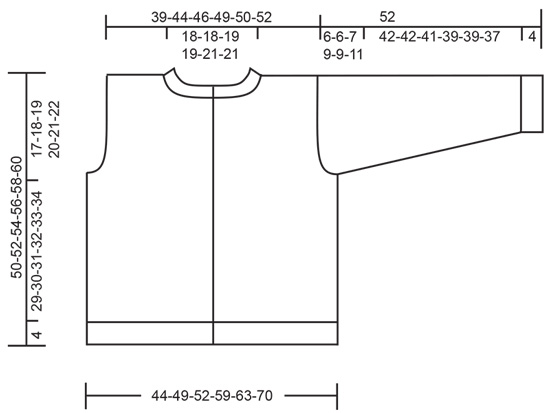
|
||||||||||||||||||||||||||||
|
Have you made this or any other of our designs? Tag your pictures in social media with #dropsdesign so we can see them! Do you need help with this pattern?You'll find tutorial videos, a Comments/Questions area and more by visiting the pattern on garnstudio.com. © 1982-2024 DROPS Design A/S. We reserve all rights. This document, including all its sub-sections, has copyrights. Read more about what you can do with our patterns at the bottom of each pattern on our site. |
||||||||||||||||||||||||||||












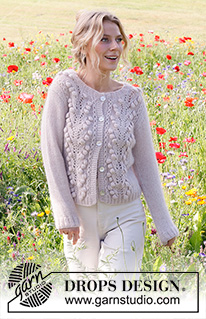




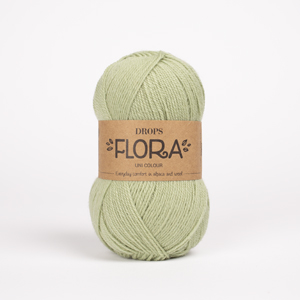
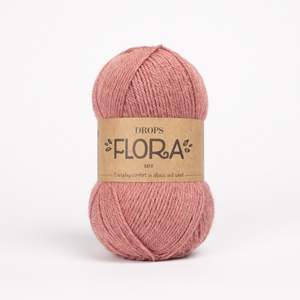












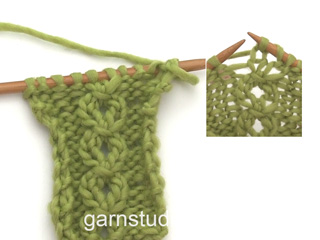

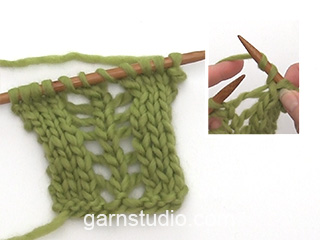













































Comments / Questions (18)
What does it mean "5 band stiches in garter stitch"? I am beginner and cannot find it in the Internet as well.
12.01.2024 - 20:16DROPS Design answered:
Hi Ruta, 5 band stitches = outermost (edge) stitches on each front edge, with buttons on one side and buttonholes on the other. Explanation for ridge/garter stitch see in the Explanations fot the pattern above the text. Happy knitting!
13.01.2024 - 17:35Hei) Jeg har akkurat fullført jakken til min svigerdatter. Den ble nydelig! Men mitt barnebarn ( 7) ønsker også en!! Finner jeg denne i barnestørrelse? Mvh Anne-Grethe 👍
02.11.2022 - 15:50DROPS Design answered:
Hei Anne-Grethe, Du finner alle våre barngensere ved å søke i søkeboksen. Hvis du vil ha akkurat den samme genseren, kan du justere antall masker og pinner for å redusere størrelsen. Lykke til! God fornøyelse!
03.11.2022 - 07:04Hei, spm mine over her gjaldt forstykket, tror dere svarer på bakstykket? Jeg lurer på om/hvordan jeg skal felle samtidig som A1 skal strikkes (1 omg etter vrangbord).
07.07.2022 - 07:23DROPS Design answered:
Hej Elisabeth, Du feller ved at strikke 2 vrangmasker sammen på hver side af hul/boblemønsteret i A.1 når du strikker 1.pind (1.pind = nederste pind i diagrammet) 2.pind strikker du fra vrangen (vi beskriver hvordan det skal se ud fra retsiden), vi skal prøve at skrive det tydeligere i opskriften :)
02.08.2022 - 14:11To spm: Jeg skjønner ikke 1. omg etter vrangbord på forstykket. I str S, skal d felles jevnt 8 m over 17 m, samtidig som man begynner på A1? Neste omg som beskrives (omg 2 etter vrangbord?) er også fra retten. Hvordan skal vrangen i mellom strikkes?
05.07.2022 - 21:59DROPS Design answered:
Hei Elizabeth, Etter vrangborden, strikker du 1 rad rett og feller 11 masker jevnt på raden. Deretter strikker du glattstrikk (vrang fra vrangen på rad 2) med 1 kantmaske i rille i hver side. Forsetter med glattstrikk fram og tilbake. God fornøyelse!
06.07.2022 - 07:01Hallo ik heb het patroon van drops design.patroon fl -070 garengroep a+a...gebreide damesvest met knobbeltjes.bij de beschrijving staat dat ik met dubbele draad moet breien..hoe komt het dan dat ik 200gr kleur 22 van drops flora en maar 100gr kleur 40 van drops kid _silk nodig heb.volgens het patroon moet ik alles met dubbele draad breien.\r\nGroetjes
13.02.2022 - 14:05No hay diagramas
11.02.2022 - 17:22Hola, no puedo ver ni descargar los diagramas del patrón
10.02.2022 - 20:10No se pueden ver los diagramas
09.02.2022 - 00:48Primavera
01.02.2022 - 11:42Heather
17.01.2022 - 10:40